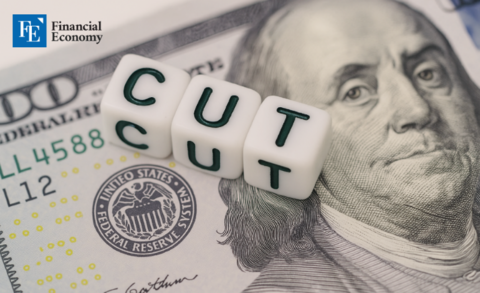Who’s Behind the Prime Day Scam? Amazon’s Reputation in the Crosshairs
Input
Modified
Somewhere beneath the hype of Prime Day scams lurks a deliberate sabotage. The phishing messages are polished, targeted, and disturbingly credible. Given Amazon’s dominance, shadowy rivals may be playing a silent but destructive game.
Amazon made headlines once again, but not for new consumer features. Instead, this time it was digital fraud tied to “scammy” text messages that promised refunds or shipping updates. The sophistication of the texts caught attention. They mimicked official messaging channels and appeared tied to Prime Day activity. At a moment when Amazon’s service ecosystem is experiencing its peak traffic, these phishing schemes erode user trust and corporate credibility. For victims, the losses were real and immediate. For the rest of the online world, the question remains: who would benefit from damaging Amazon’s reputation at scale?

A Sophisticated Scam Hits Amazon’s Weak Point in Prime Day
Alerts from the Federal Trade Commission describe a wave of low-volume, high-target phishing texts. Recipients were informed of an alleged refund or order issue and encouraged to click a link or call a “customer service” number. Unlike the usual spam barrage, these messages were precisely timed, ranging from shipping notices to authentication prompts, and were designed to resemble standard Amazon communications. The result: an alarming number of hours logged, visits to fake login pages, and, reportedly, stolen credit card credentials.
Scammers timed this campaign around Prime Day to capitalize on the heightened attention. Typically speaking, phishing emails are easily dismissed. However, when someone is just months into a Prime membership, the branding and timing feel genuine. FTC reports show that these scams drove flimsy landing pages built to collect user data, with captured customer information funneling through payment forms.
Not all victims reported significant losses. But enough did. Some reported losing thousands after entering their login credentials or payment information. Others reported unauthorized charges. Amazon’s consumer help pages sprang into action, updating warnings in near real-time. Customer service began requiring online chat verification. Meanwhile, Amazon issued a public message asking users not to respond to any refund link outside its main app. The damage was swift, and it remains unclear how these messages even bypassed standard spam filters, which is under internal review.
Who Benefits When Amazon Stumbles? Rivalry in the Shadows
Amazon’s dominance makes it the clear target for fraud, but some observers suggest a darker dimension. This is not garden-variety script-kiddie hacking. These messages appear too polished. The language, branding elements, and timing are precise. This feels more like a black‑op, an attack crafted with enough intelligence to anticipate Amazon’s real-world traffic patterns and customer behavior.
There is suspicion of involvement from other e‑commerce or “C-Commerce” businesses. These compact, fast-moving online businesses thrive on niches and margins. Amazon’s scale, logistics infrastructure, and anytime delivery network give it enormous power. If someone wanted to slow down Amazon, harming trust around Prime Day could be a strategic move. Although there is no proof so far, the possibility can’t be dismissed.
In the broader context of retail competition, this incident evokes the notion of industrial sabotage. Amazon’s strength depends heavily on user trust, especially during high-traffic events like Prime Day. A few hundred compromised accounts or suspicious messages per hour can create ripple effects in consumer sentiment. Payment credentials lost are one thing. Eroded confidence is far more intangible and costly.

Consumer Education and Amazon’s Defense Strategy
Once Amazon and the FTC scaled up warnings, the phishing campaign lost momentum. That is how strong feedback loops can stop fraud in its tracks. Amazon pushed notifications in its app, emailed Prime customers, and posted advisories on its help pages. The messaging emphasized that Amazon only provides refunds within its platform, not via SMS or phone calls.
Several tech blogs and media outlets joined in educational efforts. Sites like SlashGear published lists of phishing red flags, including suspicious URL domains, even-character sender numbers, and unexpected messages claiming refund or delivery issues. Victims were advised never to click links outside Amazon’s verified communication channels or provide personal information by phone. Amazon even offered one-time extra account protections, such as two‑factor login tokens for customers who reported suspicious messages.
Still, dealing with phishing requires constant vigilance. Fraudsters refine their language. They rotate phone numbers. They test new emotional triggers. Apple iPhone users reported how some phishing messages even attempted to mimic Apple ID security alerts. The message quality now requires not just spam filters but behavioral analysis, flagging unusual user inputs or unexpected location logins.
From Amazon’s standpoint, the cost is significant. The company must handle refunds, remediations, credit freezes, and legal exposure. At the same time, perhaps more worrying, it must assure users that it remains secure. Rebuilding trust after such an assault requires a consistent message, accompanied by reinforced security measures. Loyalty programs and Prime churn rates may become more sensitive to phishing incidents than ever before.
At Prime Day’s close, Amazon reported that fraudulent losses totaled a small fraction of a billion dollars in overall sales. Still, insiders confirm that margin pressure increased, help desk load surged, and brand perception took a temporary hit. Whether competitors stood to gain is speculative. What is not in doubt is that data integrity and identity protection remain Amazon’s most vulnerable constructs, and phishing exposes them to risk.
Amazon’s brand is a fortress built on reliability, customer service, and seamless logistics. But it is not invulnerable. If the damage from this fraudulent campaign originated from bad actors with strategic interests in Amazon’s slowdown, the incident may signal a shift in cyber-competition tactics. Amazon, facing heightened scrutiny, must now focus on intelligence sharing with law enforcement, refine anomaly detection, and integrate it into its backend systems, while maintaining constant public transparency around fraud incidents. Because in e-commerce, reputation is everything, and once trust is compromised, rebuilding it can cost far more than any reimbursement.





















